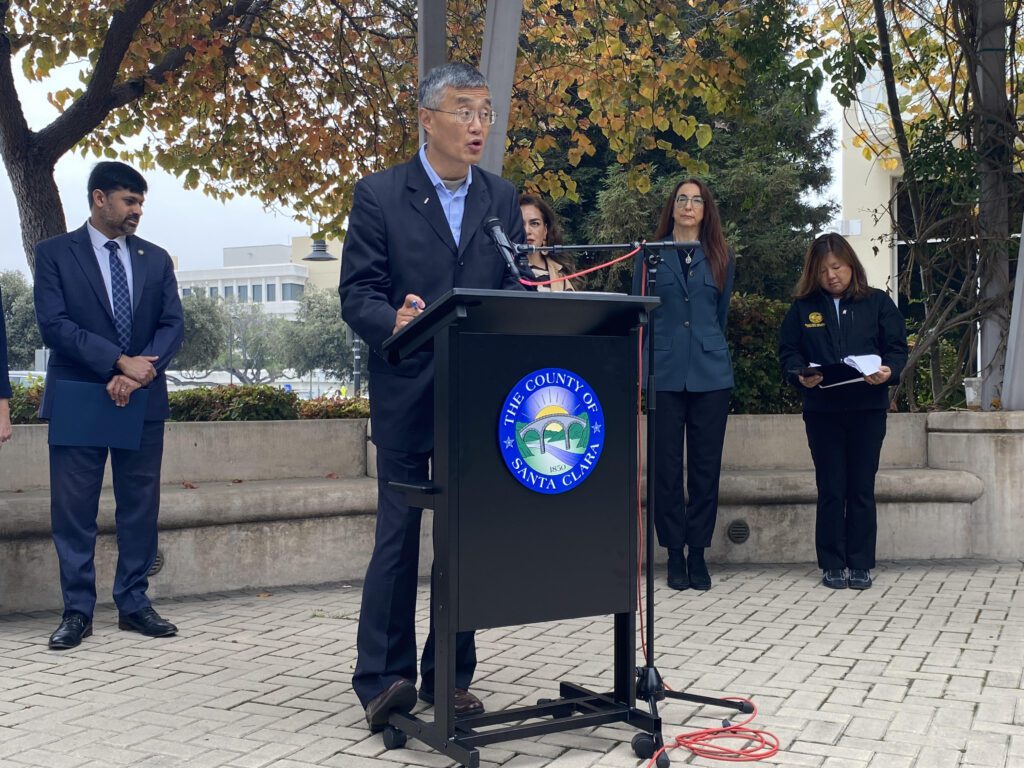The 5-Million-Year Heatwave That Followed Earth’s Deadliest Extinction: Here’s What Triggered It – The Daily Galaxy

Report on the Climatic Impact of Deforestation: Lessons from the Permian-Triassic Extinction and Implications for Sustainable Development Goals
Executive Summary
A recent study published in Nature Communications by researchers from the University of Leeds and the China University of Geosciences provides critical insights into the prolonged 5-million-year heatwave following the Permian-Triassic Mass Extinction. The research identifies the collapse of tropical forests as a primary driver of this “super-greenhouse” climate, a finding with profound implications for contemporary climate change and the achievement of the United Nations Sustainable Development Goals (SDGs). This report analyzes the study’s findings and their direct relevance to SDG 13 (Climate Action) and SDG 15 (Life on Land), highlighting the urgent need to protect terrestrial ecosystems to ensure planetary stability.
Historical Precedent: The Permian-Triassic Climate Catastrophe
The “Great Dying” and Its Aftermath
Approximately 252 million years ago, the Permian-Triassic Mass Extinction event, triggered by massive volcanic eruptions in the Siberian Traps, eliminated the vast majority of marine and terrestrial species. While the initial release of volcanic carbon dioxide (CO2) initiated global warming, this study reveals that the persistence of extreme heat for millions of years was not solely due to volcanic activity. The primary cause was the subsequent collapse of the planet’s tropical forests.
Key Research Findings
The international research team established a direct link between deforestation and long-term climate destabilization. Their analysis of fossil and geological records demonstrated that:
- The widespread loss of tropical forests crippled Earth’s capacity for carbon sequestration.
- This failure in the planetary carbon cycle allowed atmospheric CO2 to remain at elevated levels long after the initial volcanic events ceased.
- The collapse of this vital biosphere component was the critical factor that sustained a global “super-greenhouse” state for an extended geological period.
Implications for the 2030 Agenda for Sustainable Development
SDG 13: Climate Action
The study serves as a stark historical analogue for the challenges outlined in SDG 13. It underscores the existence of climatic tipping points, where ecosystem degradation can trigger self-perpetuating warming cycles. The findings warn that even if anthropogenic CO2 emissions are halted, the collapse of modern tropical forests could lock the planet into an accelerated warming trajectory, making it impossible to limit the global temperature increase and undermining all efforts to combat climate change and its impacts.
SDG 15: Life on Land
This research places significant emphasis on the objectives of SDG 15, which calls for the protection, restoration, and sustainable management of terrestrial ecosystems. The study validates that forests are not merely repositories of biodiversity but are fundamental components of the global climate system. The Permian-Triassic event illustrates the catastrophic consequences of failing to meet targets related to halting deforestation and restoring degraded forests. Key takeaways for SDG 15 include:
- Ecosystems as Climate Regulators: The primary function of tropical forests in carbon sequestration is essential for climate stability. Their preservation is a core climate mitigation strategy.
- Irreversible Damage: The collapse of forest ecosystems can lead to environmental changes on geological timescales, far exceeding human capacity for remediation.
- Proactive Conservation: Protecting existing forests is a more effective and cost-efficient strategy than attempting to reverse a climate that has spiraled out of control due to ecosystem failure.
Conclusion and Strategic Recommendations
The parallels between the post-extinction environmental collapse and the current trajectory of climate change and deforestation are alarming. The research mandates a renewed focus on the interconnectedness of biodiversity, ecosystem health, and climate stability. To prevent a modern-day repeat of this catastrophic feedback loop and to advance the 2030 Agenda, the following actions are imperative:
- Integrate forest conservation and restoration as a central pillar of national and international climate policies under SDG 13.
- Accelerate global efforts to halt deforestation and forest degradation, in line with the targets of SDG 15.
- Support international scientific collaboration, as exemplified by this study, to better understand and model Earth’s climate-biosphere systems, contributing to SDG 17 (Partnerships for the Goals).
- Recognize that preserving the planet’s natural carbon sinks is fundamental to achieving a sustainable and climate-resilient future for all.
SDGs Addressed in the Article
-
SDG 13: Climate Action
The article is fundamentally about climate change, discussing a historical “5-million-year heatwave” and drawing “chilling warning[s] for modern climate change.” It explores the drivers of global warming, such as volcanic CO2 emissions and the collapse of carbon-sequestering ecosystems, directly aligning with the goal of taking urgent action to combat climate change and its impacts.
-
SDG 15: Life on Land
This goal is central to the article’s main finding. The research identifies the “collapse of tropical forests” as the key driver of the prolonged heatwave. The text repeatedly emphasizes the “importance of Earth’s present-day tropical forests” for climate stability and calls for global efforts to “prevent further deforestation” and promote “sustainable land-use practices.” This directly connects to the protection, restoration, and sustainable use of terrestrial ecosystems.
-
SDG 14: Life Below Water
Although a secondary theme, the article explicitly mentions that the Permian-Triassic Mass Extinction led to the “annihilation of nearly all marine species.” This historical context highlights the vulnerability of marine ecosystems to catastrophic climate events, connecting the article’s subject matter to the conservation and sustainable use of oceans and marine resources.
Specific SDG Targets Identified
-
SDG 13: Climate Action
- Target 13.1: Strengthen resilience and adaptive capacity to climate-related hazards and natural disasters. The article discusses a past climate disaster—the “super-greenhouse” climate—and warns that a similar collapse of modern forests could lead to “irreversible global warming,” highlighting the need to build resilience against such tipping points.
- Target 13.2: Integrate climate change measures into national policies, strategies and planning. The conclusion explicitly states that protecting forest ecosystems “must become a central focus of both climate mitigation and adaptation strategies,” urging a policy-level integration of these concepts.
- Target 13.3: Improve education, awareness-raising and human and institutional capacity on climate change mitigation. The study itself, and the article reporting on it, serves this purpose by providing a “chilling warning” and urging us to “heed the lessons from Earth’s distant past” to understand the long-term consequences of ecosystem collapse on the climate.
-
SDG 15: Life on Land
- Target 15.1: Ensure the conservation, restoration and sustainable use of terrestrial and inland freshwater ecosystems and their services, in particular forests. The article’s core message is about the critical role of tropical forests in climate regulation through “carbon sequestration,” and the conclusion calls for “preserving tropical forests” to safeguard the planet’s climate.
- Target 15.2: Promote the implementation of sustainable management of all types of forests, halt deforestation, restore degraded forests and substantially increase afforestation and reforestation globally. The research directly supports this target by warning of the consequences of forest collapse and stressing the “urgent need for global efforts to prevent further deforestation.”
- Target 15.9: Integrate ecosystem and biodiversity values into national and local planning and development processes. The article argues that “preserving the natural systems that regulate the climate is far more cost-effective than attempting to reverse the damage once it’s done,” making a case for integrating the value of ecosystems like tropical forests into all climate and development planning.
-
SDG 14: Life Below Water
- Target 14.2: Sustainably manage and protect marine and coastal ecosystems to avoid significant adverse impacts. The article’s reference to the “annihilation of nearly all marine species” during the historical extinction event serves as a stark example of a “significant adverse impact” on marine ecosystems resulting from climate change, reinforcing the importance of this target.
Indicators for Measuring Progress
-
For SDG 13 (Climate Action)
- Atmospheric Carbon Dioxide (CO2) Levels: The article explicitly mentions that volcanic eruptions released “vast amounts of carbon dioxide (CO2) into the atmosphere” and that the loss of forests allowed “atmospheric CO2 levels to remain elevated.” This is a primary indicator for tracking climate change.
- Global Temperature: The entire study focuses on explaining a “5-million-year heatwave” and an era of “intense global warming,” making global temperature a key implied indicator.
- Human Greenhouse Gas Emissions: The article draws a parallel to the present by discussing the need to “stop emitting CO2” and reach “zero human emissions,” implying that tracking these emissions is a critical measure of progress.
-
For SDG 15 (Life on Land)
- Forest Cover and Deforestation Rates: The central finding is the “collapse of tropical forests” and the “widespread loss of these forests.” The call to “prevent further deforestation” makes the rate of forest loss a direct and crucial indicator.
- Carbon Sequestration by Forests: The article highlights the failure of “carbon sequestration” as a key driver of warming. Measuring the capacity of forests to absorb and store carbon is an implied indicator of their health and contribution to climate stability.
-
For SDG 14 (Life Below Water)
- Marine Species Extinction Rate/Biodiversity Index: The historical “annihilation of nearly all marine species” is mentioned as a key outcome of the extinction event. This implies that tracking marine biodiversity and extinction rates is an indicator of the health of marine ecosystems under climate stress.
Summary of SDGs, Targets, and Indicators
| SDGs | Targets | Indicators (Mentioned or Implied in the Article) |
|---|---|---|
| SDG 13: Climate Action |
13.1: Strengthen resilience to climate-related disasters. 13.2: Integrate climate change measures into policies. 13.3: Improve education and awareness on climate change. |
– Atmospheric CO2 levels – Global temperature – Rate of human CO2 emissions |
| SDG 15: Life on Land |
15.1: Conserve and restore terrestrial ecosystems, especially forests. 15.2: Halt deforestation and promote sustainable forest management. 15.9: Integrate ecosystem values into national planning. |
– Forest cover and deforestation rates – Carbon sequestration capacity of forests |
| SDG 14: Life Below Water | 14.2: Protect marine ecosystems from adverse impacts. | – Marine species extinction rates / biodiversity levels |
Source: dailygalaxy.com

What is Your Reaction?
 Like
0
Like
0
 Dislike
0
Dislike
0
 Love
0
Love
0
 Funny
0
Funny
0
 Angry
0
Angry
0
 Sad
0
Sad
0
 Wow
0
Wow
0



























;Resize=805#)


















































